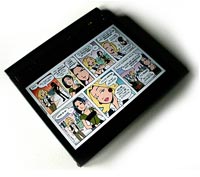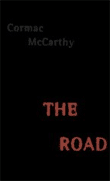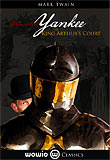
I’ve been evaluating different ebook reading technologies over the last months, and I think it’s time for an interim report card on just how suitable the different technologies are for the purpose. My ratings are extrapolated a bit to try to account for the capabilities of a category as a whole rather than any specific device, but it’s obviously an inexact art. I’ll also put out the immediate disclaimer that this discussion is based on a limited sample of devices which aren’t wholly representative of the range of available gear. For fun, though, I’ll even include hypothetical ratings on a machine that doesn’t yet exist — my dream ebook machine, the mythical iTablet or iSlate. This not-so-farfetched device is like an iPhone grown up into a slick, touch-driven, Mac OS X tablet computer.
These hardware categories — desktop, laptop, tablet, dedicated reader, mobile and mythical iTablet — are rated on six criteria that affect the reading experience:
 Compatibility refers to a machine’s ability to open ebook files and other documents in various formats. Are proprietary and DRM’d formats supported? Are workarounds required or even available for opening these formats?
Compatibility refers to a machine’s ability to open ebook files and other documents in various formats. Are proprietary and DRM’d formats supported? Are workarounds required or even available for opening these formats?
Form Factor is a qualitative measure of how comfortable the devices are for reading. Does it pass the reading-on-the-couch test? How about the even more rigorous trial of reading in bed?
Portability is an indicator of size and weight. Is it something that I’ll want to casually carry around, or will I need to consider trade-offs to save room in my messenger bag or, more importantly, to save my back?
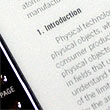 Display is a subjective measure of how good the screen is for the purpose of reading. This encompasses hard data like color, screen resolution and screen size, but it also is a subjective measure of how comfortable the reading experience is and how well it renders and displays text.
Display is a subjective measure of how good the screen is for the purpose of reading. This encompasses hard data like color, screen resolution and screen size, but it also is a subjective measure of how comfortable the reading experience is and how well it renders and displays text.
Battery Life is an indicator of how often the device needs to be charged on a typical usage cycle. This includes drain from other uses, so if I typically use a laptop for general computing and use up the battery, this is included in the measure. A dedicated device is, by definition, largely used for a single purpose and thus would have fewer other applications leeching from its usable batter life.
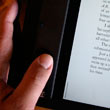 Experience is an effort to sum up all of the subjective and sometimes intangible qualities in a single number. This includes the device’s feel in-hand, negative distractions from the reading experience (such as system demands for attention — did someone say “Vista?”), interface usability and even that ultimate example of subjectivity— the fun factor.
Experience is an effort to sum up all of the subjective and sometimes intangible qualities in a single number. This includes the device’s feel in-hand, negative distractions from the reading experience (such as system demands for attention — did someone say “Vista?”), interface usability and even that ultimate example of subjectivity— the fun factor.
The Scorecard
| feature |
desktop |
laptop |
tablet |
reader |
mobile |
iTablet |
| compatibility |
10 |
10 |
10 |
4 |
6 |
7 |
| form factor |
1 |
3 |
8 |
8 |
6 |
10 |
| portability |
0 |
5 |
7 |
9 |
10 |
8 |
| display |
9 |
9 |
9 |
5 |
3 |
10 |
| battery life |
n/a |
5 |
6 |
10 |
8 |
7 |
| experience |
1 |
4 |
6 |
6 |
5 |
9 |
Notes
Compatibility ratings are high for the general-purpose computers, since they can generally handle anything that can be thrown at them. One major exception is the lack of support for some proprietary DRM formats on the Mac.
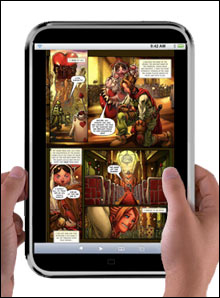
The hypothetical iTablet.
The mythical iTablet would have limited initial support for these formats, but being a general-purpose and relatively open machine, software could be developed for the purpose.
The form factor for the tablet PC gains a few points for a large and flexible display, but loses them again for being somewhat bulky compared to a dedicated reader. Conversely, the dedicated reader gains points for svelteness but loses a few for the relatively small screen. These factors are a wash for me, resulting in the tie score.
Display ratings for the mythical machine are higher than the other general-purpose machines based on the assumption that it will sport a superior display like that in the iPhone.
Text display on e-ink-based dedicated readers like the Sony Reader would be a point or two higher for text read in good light. The lower score in the table reflects poorer performance in marginal lighting conditions. Displays on LCD-based dedicated readers like the iLiad are closer to the ratings for tablet devices.
The tablet would rate higher on overall experience if it were just a little lighter and more compact, and if the operating system required less care and feeding. I ding the mobile devices for overall experience because I don’t like reading on tiny screens unless I have to, even given the superior screen and great ebook potential of something like the iPhone. Your mileage on this, like everything else on this table, will vary.
A Moving Target
I’d like to make this table a living document, updating it periodically as the technologies evolve and adding additional criteria as needed. If you have suggestions for additional measures, let me know. And if you violently disagree with my ratings — or just have your own ideas — I’d love to see your version of the table and the reasoning behind it!
Related Posts
Lenovo X61T: The Reading-on-the-Couch Test
Sony Reader: Mammal or Dinosaur?
eBook Readers: Looking for Just Right
iPhone and eBooks: the Video


 If you’re a Mac user using a Sony Reader, you’ve been compelled to use
If you’re a Mac user using a Sony Reader, you’ve been compelled to use  In the meantime, though, the options for reading available today have evolved quite a bit since I last surveyed the scene. For example, the web app
In the meantime, though, the options for reading available today have evolved quite a bit since I last surveyed the scene. For example, the web app 




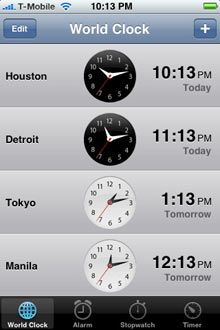 Otherwise, be prepared to consistently leave one of them behind (or risk a sore back). The iPhone came along by default, since I needed a phone and texting device. The laptop was optional, but I wanted to bring it along so I could process photographs on the road. The Sony almost stayed home, but its small footprint and low weight made it an easy last minute addition despite my already-overloaded messenger bag.
Otherwise, be prepared to consistently leave one of them behind (or risk a sore back). The iPhone came along by default, since I needed a phone and texting device. The laptop was optional, but I wanted to bring it along so I could process photographs on the road. The Sony almost stayed home, but its small footprint and low weight made it an easy last minute addition despite my already-overloaded messenger bag.
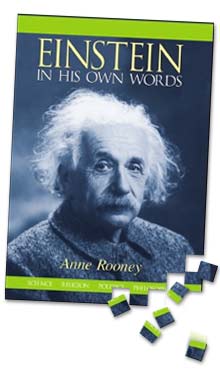
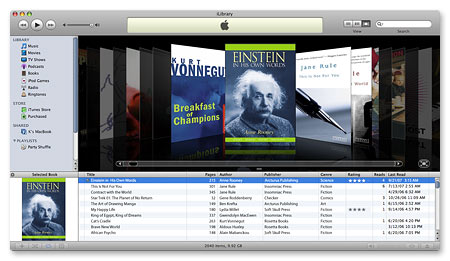
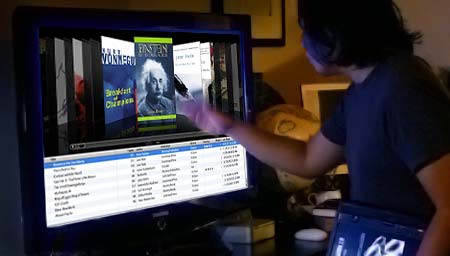
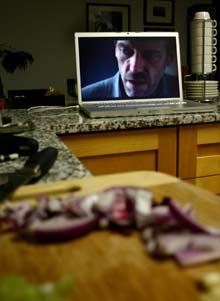
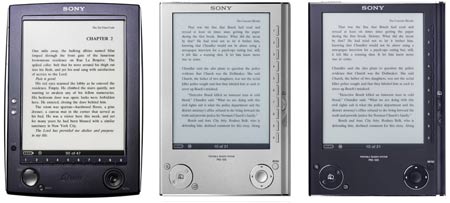

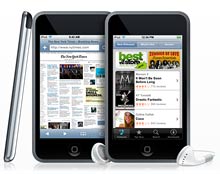 Yesterday’s
Yesterday’s 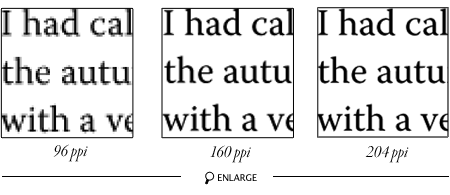
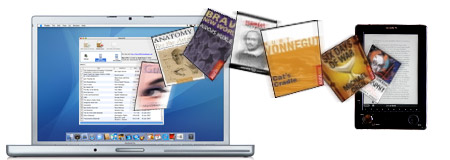
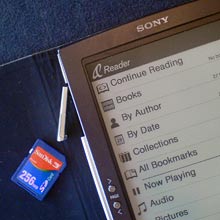
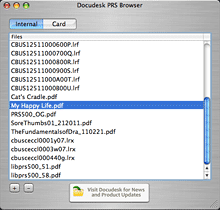
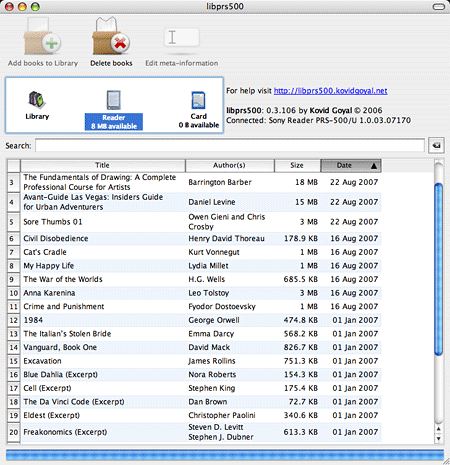

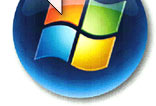

 Compatibility refers to a machine’s ability to open ebook files and other documents in various formats. Are proprietary and DRM’d formats supported? Are workarounds required or even available for opening these formats?
Compatibility refers to a machine’s ability to open ebook files and other documents in various formats. Are proprietary and DRM’d formats supported? Are workarounds required or even available for opening these formats?  Display is a subjective measure of how good the screen is for the purpose of reading. This encompasses hard data like color, screen resolution and screen size, but it also is a subjective measure of how comfortable the reading experience is and how well it renders and displays text.
Display is a subjective measure of how good the screen is for the purpose of reading. This encompasses hard data like color, screen resolution and screen size, but it also is a subjective measure of how comfortable the reading experience is and how well it renders and displays text. Experience is an effort to sum up all of the subjective and sometimes intangible qualities in a single number. This includes the device’s feel in-hand, negative distractions from the reading experience (such as system demands for attention — did someone say “Vista?”), interface usability and even that ultimate example of subjectivity— the fun factor.
Experience is an effort to sum up all of the subjective and sometimes intangible qualities in a single number. This includes the device’s feel in-hand, negative distractions from the reading experience (such as system demands for attention — did someone say “Vista?”), interface usability and even that ultimate example of subjectivity— the fun factor.

